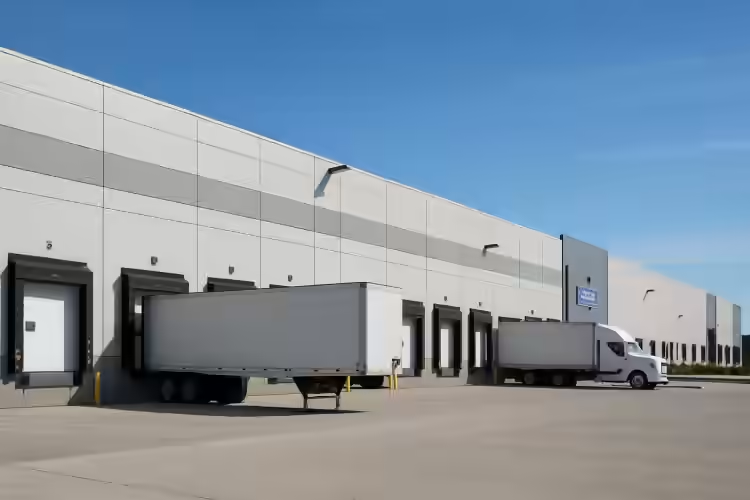Why Location Matters for Manufacturers
Let’s cut to the chase—where you set up shop as a manufacturing company can make or break your bottom line.
It’s not just about cheap land or warehouse space. It’s about labor. Access to suppliers. Proximity to customers. Shipping costs. Incentives. Infrastructure.
The right warehouse market? It can save you millions. The wrong one? Could saddle you with inefficiencies for years.
So let’s dig into the best warehouse markets in the U.S. for manufacturers—and why they’re winning.
Midwest Powerhouses: Where Industry Meets Affordability
Columbus punches way above its weight.
You’ve got access to 60% of the U.S. population within a day’s drive. Industrial lease rates are still below national averages. Labor pool? Deep and reliable.
It’s not flashy, but it’s incredibly functional—which is exactly what manufacturers need.
Interstates 65, 70, and 74 all converge here, making it a shipping dream. It’s got a robust rail system, and the cost of doing business is low.
We’ve seen medical device companies and auto suppliers thrive here with modest overhead and solid logistics.
Still a manufacturing titan. While automotive is the big story, advanced manufacturing and robotics are booming too.
Vacant industrial stock is being repurposed, and the talent pipeline is strong thanks to engineering schools and trades programs.
Southern Strength: Fast-Growing Manufacturing Hubs
Dallas has everything—massive intermodal facilities, a huge labor force, and access to Mexico via I-35.
Companies love the business climate in
Texas, and warehouses are going up fast to meet demand. Big players in aerospace, electronics, and machinery are pouring in.
The Southeast’s logistics kingpin. Access to the Port of Savannah, a mega airport, and a growing network of distribution centers.
We’re seeing more light industrial and precision manufacturing in the suburbs—especially where land is cheaper and zoning is flexible.
This one's a sleeper. But not for long.
Huntsville’s booming in aerospace, defense, and advanced materials. It has one of the highest concentrations of engineers per capita in the U.S.—and guess what? Warehouse space is still affordable.
Western Growth Zones: Ports, Tech & Access
Manufacturers are stampeding here from California.
Why? Low taxes, available land, and solid rail access. It’s also home to booming industries like semiconductors and battery tech.
And the warehouse pipeline? Massive. Especially along the I-10 corridor.
Reno’s become the inland port for NorCal manufacturing.
Companies that want to avoid the high costs and congestion of
Oakland, California or
San Jose are moving their warehouse ops here.
Proximity to
Sacramento, incentives from
Nevada, and a business-friendly tax structure make it a no-brainer.
Clean, tech-savvy, and perfectly positioned between West Coast ports and the central U.S.
Manufacturers in outdoor gear, medical tech, and consumer products are growing fast here. Plus, SLC has a surprisingly modern freight infrastructure.
Up-and-Coming Markets to Watch
Home to BMW’s largest plant in the world. And that’s just the start.
The Inland Port in Greer connects directly to the Port of Charleston, creating a killer supply chain route for manufacturers across the Southeast.
If nearshoring from Mexico is in your strategy, you can’t ignore El Paso. It’s a manufacturing bridge—literally.
With maquiladoras just across the border and strong warehousing infrastructure, it’s becoming a vital logistics node.
Home to UPS Worldport. If air freight matters to your manufacturing business, this city needs to be on your radar.
Plus, the metro area is investing heavily in smart infrastructure and workforce training.
Tips for Smart Site Selection
Not every “hot” market will be right for your business. Here are a few things to keep in mind:
- Look beyond rent: Labor costs, tax incentives, and access to transport hubs often matter more than base lease rates.
- Check utilities and permitting: Especially if your operation uses heavy equipment or hazardous materials.
- Think workforce: Can you hire skilled people? How’s the competition for labor?
- Assess growth potential: Choose a market you can scale in—not one that will box you in within 2 years.
And honestly? Don’t pick a site without walking it. Maps and specs are great, but standing inside the space? That tells you everything.
Final Thoughts: Go Where the Growth Is
There’s no perfect market. But there are great fits—if you know what to look for.
Manufacturers today need more than just four walls and a roof. They need logistics support, skilled labor, room to scale, and a community that wants their business to thrive.
From the dense intermodal hubs of the Midwest to the fast-expanding corridors in the South and West, U.S. warehouse markets are evolving fast.
So whether you’re launching a new facility or planning your next expansion, keep one eye on cost—and the other on future growth.
And when you're ready to browse properties?
IndustrialSpaces.net has you covered.

